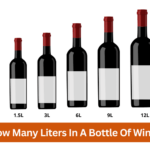How many calories in a bottle of red wine? It’s a question that has intrigued me for years, as I’ve embarked on countless culinary adventures accompanied by a fine glass of this rich elixir. From intimate gatherings with friends to festive celebrations, red wine has always played a central role in creating memorable moments. But for someone who is conscious of their health and mindful of their calorie intake like me, I’ve often found myself pondering the nutritional implications of indulging in a bottle of this beloved beverage. So, armed with curiosity and a desire to demystify the subject, I embarked on a personal quest to uncover the truth about the caloric content of red wine. Join me on this tantalizing journey as we explore the mysteries of how many calories in a bottle of red wine and uncover the secrets concealed within each bottle.
Understanding Red Wine
Red wine is a popular alcoholic beverage that is made from fermented dark-colored grapes. It is known for its rich and complex flavors, ranging from fruity to earthy notes, and is often enjoyed for its ability to enhance the dining experience.
Red wine is produced through the process of extracting the juice from the grapes and allowing it to ferment with the grape skins, which gives it its distinct color and character.
With a long history dating back centuries, red wine has become a beloved drink that is cherished for its taste, cultural significance, and potential health benefits.
How Many Calories in a Bottle of Red Wine 750ml?
How many calories in a bottle of red wine? A standard 750ml bottle of red wine contains approximately 600-900 calories, typically 625 calories. The exact calorie content can vary depending on factors such as the grape variety, alcohol content, and residual sugar levels. It’s important to note that these values can differ among different red wine brands and styles.
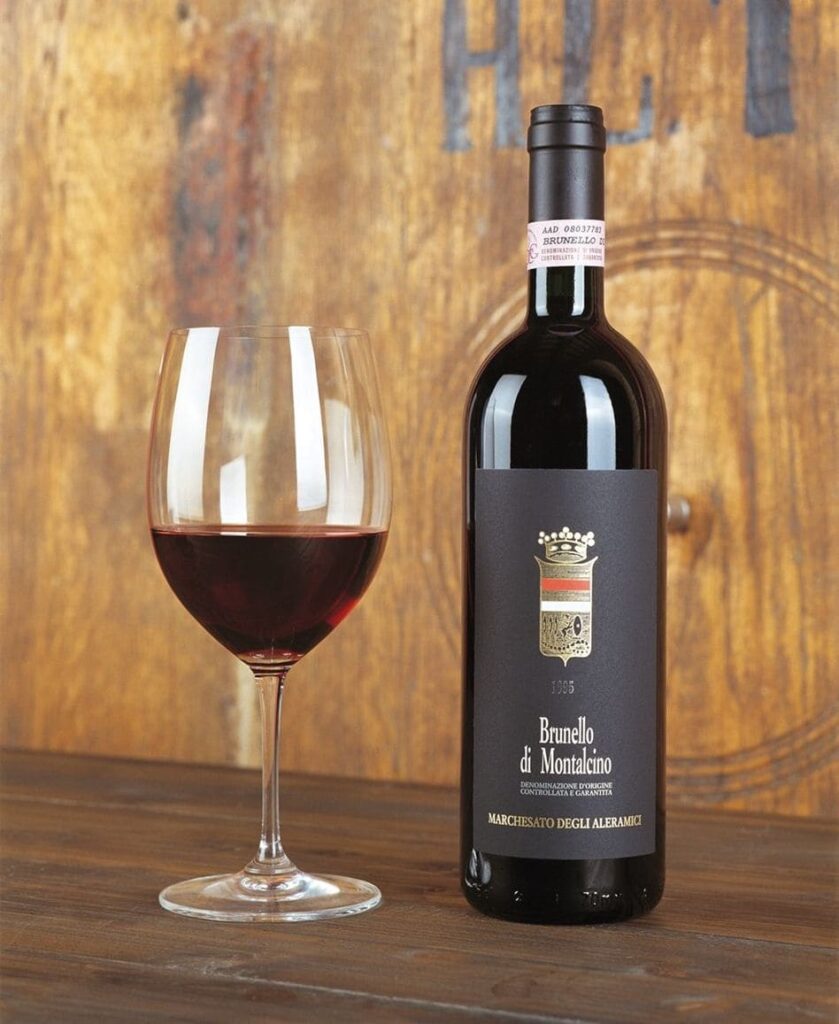
How Many Calories Does a Bottle of Red Wine Have: Different Types
When it comes to the caloric content of a bottle of red wine, it can vary depending on the different types available. Let’s explore how many calories are in different types of red wines.
How many calories in a bottle of Cabernet Sauvignon?
A full bottle of Cabernet Sauvignon typically contains 610 calories, while one glass is approximately 120 calories. Red wines are often perceived negatively when it comes to dieting, but it’s safe to say that Cabernet Sauvignon is not a concern in terms of calorie intake.
How many calories in a bottle of Merlot?
In a 750ml bottle of Merlot wine, you’ll find approximately 626 calories. So, if you’re keeping track of your calorie intake, be mindful of this flavorful red wine.
How many calories in a bottle of red wine Shiraz?
Indulging in a 750ml bottle of Shiraz red wine means consuming approximately 625 calories. For a five-ounce serving of Syrah, you can expect around 125 calories.
How many calories in a bottle of red wine Pinot Noir?
A bottle of Pinot Noir typically contains around 620 calories. It’s important to note that caloric content may vary slightly depending on the specific brand and characteristics of the wine.
How many calories in a bottle of red wine Malbec?
A 12-14% red wine, such as Malbec, typically ranges from 530 to 660 calories per bottle. Remember to consider these calories when enjoying this robust wine.
How Many Calories in a Glass of Red Wine?
A glass of red wine typically contains around 125 calories when it has 5 percent alcohol by volume. However, the calorie count can increase significantly in red wines with higher alcohol content. Full-bodied red wines can have as much as 320-350 calories per glass. It’s important to be aware of the alcohol content and choose your red wine accordingly if you’re mindful of calorie intake.
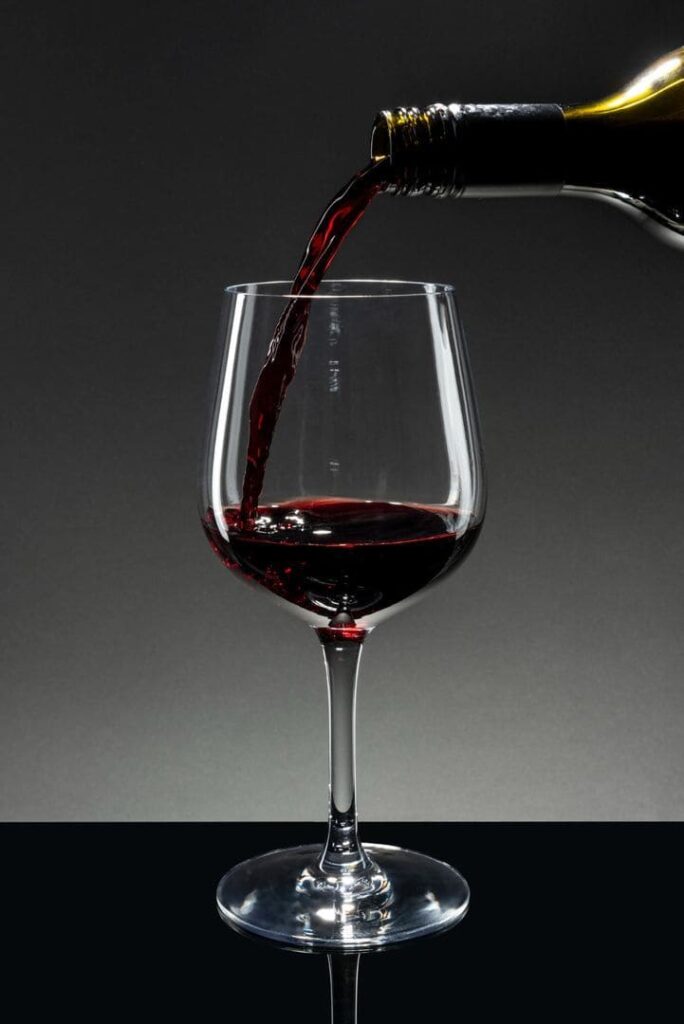
How Many Calories in Half a Bottle of Red Wine?
The number of calories in half a bottle of red wine can vary depending on the specific wine and its characteristics. On average, a standard 750ml bottle of red wine contains approximately 600-900 calories. Therefore, half a bottle would typically have around 300-450 calories.
Factors Affecting How Many Calories in One Bottle of Red Wine
Several factors can influence the number of calories in one bottle of red wine. These factors include:
- Alcohol Content: The alcohol percentage in red wine significantly contributes to its caloric content. Alcohol contains approximately 7 calories per gram, so higher alcohol levels can increase the overall calorie count.
- Residual Sugars: Red wines can contain varying amounts of residual sugars, which are the natural sugars left behind after fermentation. Sugars contribute to the caloric content of wine, so wines with higher residual sugar levels may have more calories.
- Grape Variety and Ripeness: Different grape varieties and their ripeness levels can affect the sugar content in the grapes used to make red wine. Riper grapes tend to have higher sugar levels, potentially resulting in higher-calorie wines.
- Fermentation Process: The duration and conditions of fermentation can influence the conversion of grape sugars into alcohol, affecting the overall alcohol content and, consequently, the calorie count.
- Aging and Oak Influence: Red wines that undergo oak aging or come into contact with oak during the winemaking process can develop additional flavors and characteristics. While this doesn’t directly impact calorie content, it can influence the perceived richness and overall enjoyment of the wine.
- Sweetness Levels: Some red wines, particularly dessert wines or those labeled as “sweet,” have higher sugar contents and, therefore, more calories compared to dry or less sweet red wines.
- Serving Size: The standard serving size for wine is typically around 5 ounces (148 ml). Consuming larger servings will naturally increase the calorie intake.
It’s important to note that while these factors can influence the calorie count in red wine, the specific caloric content of a bottle will depend on the wine’s individual characteristics and production methods. Moderation and mindful consumption are essential when considering the caloric impact of red wine as part of a balanced lifestyle.
The Composition of Red Wine
The composition of red wine consists of various components that contribute to its flavor, aroma, and overall characteristics. The primary components of red wine include:
- Water: Water forms the majority of red wine, providing the base for all other components.
- Alcohol: Ethanol, or alcohol, is a key component derived from the fermentation of grape sugars by yeast. It contributes to the intoxicating effects and mouthfeel of the wine.
- Carbohydrates: Red wine contains carbohydrates, primarily in the form of sugars from the grapes. These sugars influence the sweetness and body of the wine.
- Acids: Red wine contains different types of acids, including tartaric, malic, and citric acids. These acids contribute to the wine’s acidity, balance, and freshness.
- Tannins: Tannins are compounds found in the grape skins, seeds, and stems. They provide structure, astringency, and bitterness to red wine.
- Phenolic Compounds: Red wine is rich in phenolic compounds, such as anthocyanins and flavonoids, which give it its color, antioxidant properties, and potential health benefits.
- Aromas and Flavor Compounds: Red wine contains a wide range of aroma and flavor compounds, including esters, aldehydes, and terpenes, which contribute to its diverse aromatic and taste profiles.
- Sulfites: Sulfur dioxide or sulfites are often added to red wine during winemaking to preserve freshness and prevent spoilage.
These components work together to create the unique and complex characteristics that make red wine a beloved beverage enjoyed around the world.
Red Wine Alcohol Content
Red wine alcohol content can vary, but it typically falls within the range of 12% to 15% alcohol by volume (ABV). ABV represents the percentage of pure alcohol present in the wine relative to the total volume.
Red wines with lower ABV, around 12%, are considered lighter, while those with higher ABV, closer to 15%, tend to be fuller-bodied. The alcohol content contributes to the flavor, body, and potential intoxicating effects of red wine.

Type of Red Wine Contains The Highest Calories
Generally, the sweet or dessert-style red wines tend to have the highest calorie content among red wine types. Some examples of red wines that often have higher calorie counts include:
- Port Wine: Port wine is a fortified wine with a sweet and rich flavor. It is typically higher in calories due to its higher residual sugar content and increased alcohol content resulting from the fortification process.
- Late Harvest Red Wines: Late harvest red wines are made from grapes left on the vine for an extended period, allowing them to accumulate more sugars. These wines tend to be sweeter and can have higher calorie levels.
- Sweet Red Blends: Some red wine blends are crafted to be sweeter, combining different grape varieties to achieve a desired level of sweetness. These blends can have higher calorie counts compared to dry red wines.
Type of Red Wine Contains The Least Calories
When it comes to red wine, lighter and drier varieties generally have fewer calories compared to sweet or fortified wines. Some types of red wine that often contain fewer calories include:
- Pinot Noir: Pinot Noir is known for its light to medium body and delicate flavors. It typically has a lower alcohol content and fewer residual sugars, resulting in a lower calorie count compared to some other red wines.
- Beaujolais: Beaujolais is a light-bodied red wine made from Gamay grapes. It is often crafted in a style that is lower in alcohol and has fewer calories.
- Cabernet Sauvignon (Lighter Styles): While Cabernet Sauvignon can have varying calorie counts depending on the style, lighter-bodied Cabernets with lower alcohol content and minimal residual sugars are generally lower in calories.
- Sangiovese: Sangiovese is an Italian red wine grape that produces wines with moderate alcohol levels and refreshing acidity. Lighter styles of Sangiovese tend to have fewer calories.
What Color Wine Has the Most Calories?
The color of wine does not directly correlate with its calorie content. Both red and white wines can vary in terms of calorie count depending on factors such as alcohol content, residual sugars, and winemaking techniques.
The caloric content of a wine is primarily influenced by its alcohol and sugar levels rather than its color. Sweet or fortified wines, regardless of their color, tend to have higher calorie counts compared to drier wines.
It’s crucial to consider the specific wine variety, production methods, and serving size when assessing the caloric impact of a particular wine.
Does a Bottle of Low-Calorie Wine Have Lower Calories?
Yes, a bottle of low-calorie wine generally has lower calories compared to regular wines. Low-calorie wines are specifically crafted to have reduced caloric content by utilizing techniques such as minimizing residual sugar, lowering alcohol levels, or employing alternative winemaking methods.
However, note that the actual calorie count can still vary depending on the specific brand and wine-making techniques. When selecting low-calorie wines, it’s advisable to check the label or product information for accurate calorie information.
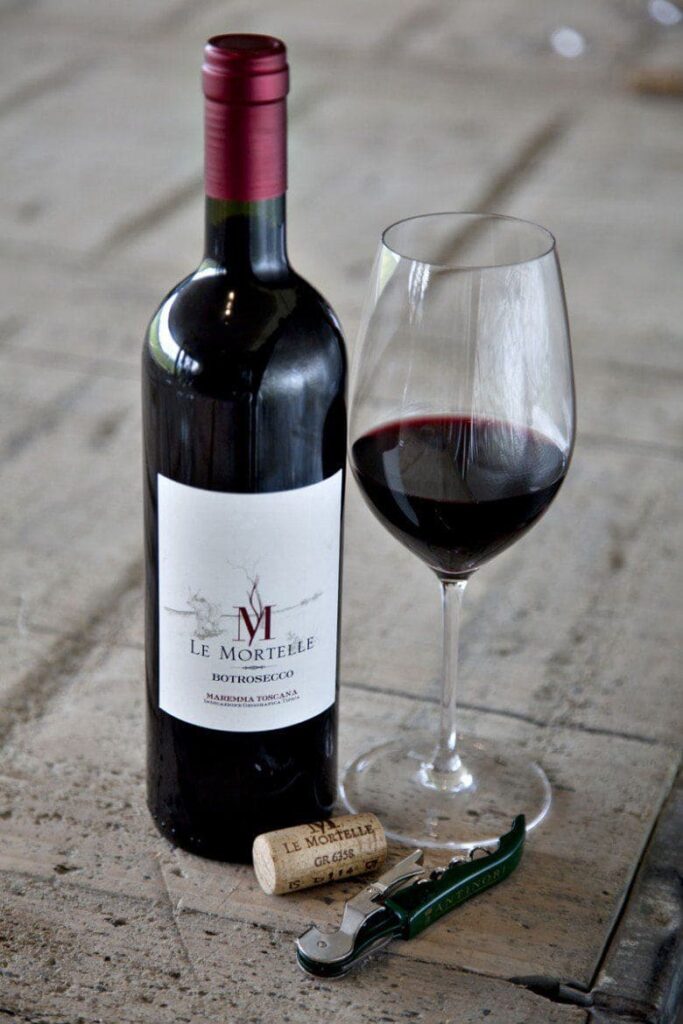
Benefits and Risks of Red Wine
Red wine has been a subject of interest due to its potential health benefits, although it’s important to consider both the advantages and potential risks associated with its consumption.
Benefits
- Heart Health: Moderate red wine consumption has been linked to a reduced risk of heart disease. The antioxidants in red wine, particularly resveratrol, may help improve heart health by promoting healthy blood vessels and reducing inflammation.
- Antioxidant Properties: Red wine contains antioxidants that can help protect against oxidative damage caused by free radicals in the body. These antioxidants may have anti-aging effects and potentially reduce the risk of certain chronic diseases.
- Potential Anti-Cancer Effects: Some studies suggest that the polyphenols and antioxidants in red wine may have anti-cancer properties, particularly for certain types of cancer, such as breast and colon cancer. However, more research is needed to fully understand this association.
- Blood Sugar Control: Some evidence suggests that moderate red wine consumption, as part of a healthy diet, may help improve insulin sensitivity and blood sugar control. This can be beneficial for individuals with or at risk of type 2 diabetes.
Risks
Despite these potential benefits, it’s important to be aware of the risks associated with red wine consumption:
- Alcohol-related Risks: Red wine contains alcohol, which can have negative health effects if consumed excessively. Excessive alcohol consumption can lead to addiction, liver damage, increased blood pressure, and an increased risk of accidents or injuries.
- Interactions with Medications: Red wine can interact with certain medications, such as blood thinners or sedatives. It’s important to consult with a healthcare professional to ensure the safe consumption of red wine while taking medications.
- Individual Sensitivities: Some individuals may experience adverse reactions to components in red wine, such as sulfites or histamines. These reactions can range from headaches and allergies to more severe symptoms.
Remember that moderation is key when consuming red wine or any alcoholic beverage. It is recommended that individuals follow the guidelines provided by health authorities and consult with a healthcare professional for personalized advice regarding alcohol consumption.
Red Wine and Other Dietary Considerations
Red wine consumption may be influenced by various dietary considerations and restrictions. Here are some important points to consider:
- Carbohydrate-Restricted Diets: Red wine contains carbohydrates, primarily in the form of sugars. If you follow a low-carbohydrate or ketogenic diet, it’s important to be mindful of the carbohydrate content in red wine and include it within your daily carbohydrate allowance.
- Gluten Sensitivity or Celiac Disease: Red wine is generally considered gluten-free. However, some individuals with gluten sensitivity or celiac disease may experience adverse reactions due to cross-contamination or additives used during the winemaking process. It’s advisable to look for wines labeled as gluten-free or consult with the winery or producer for information regarding potential gluten exposure.
- Sugar Content: Red wines can vary in their sugar content, with some being sweeter than others. If you are monitoring your sugar intake due to health concerns or dietary restrictions, it’s important to select drier red wines with lower sugar levels. Sweet or dessert-style red wines may have higher sugar content and calorie counts.
- Allergies and Sensitivities: Some individuals may have allergies or sensitivities to specific compounds present in red wine, such as sulfites or histamines. If you have known allergies or sensitivities, it’s advisable to choose wines that are labeled as low in sulfites or histamines or consult with a healthcare professional for guidance.
- Individual Dietary Needs and Goals: It’s essential to consider your individual dietary needs, goals, and any specific restrictions you may have. If you have concerns or questions about how red wine fits into your diet, it’s recommended to consult with a registered dietitian or healthcare professional for personalized advice.
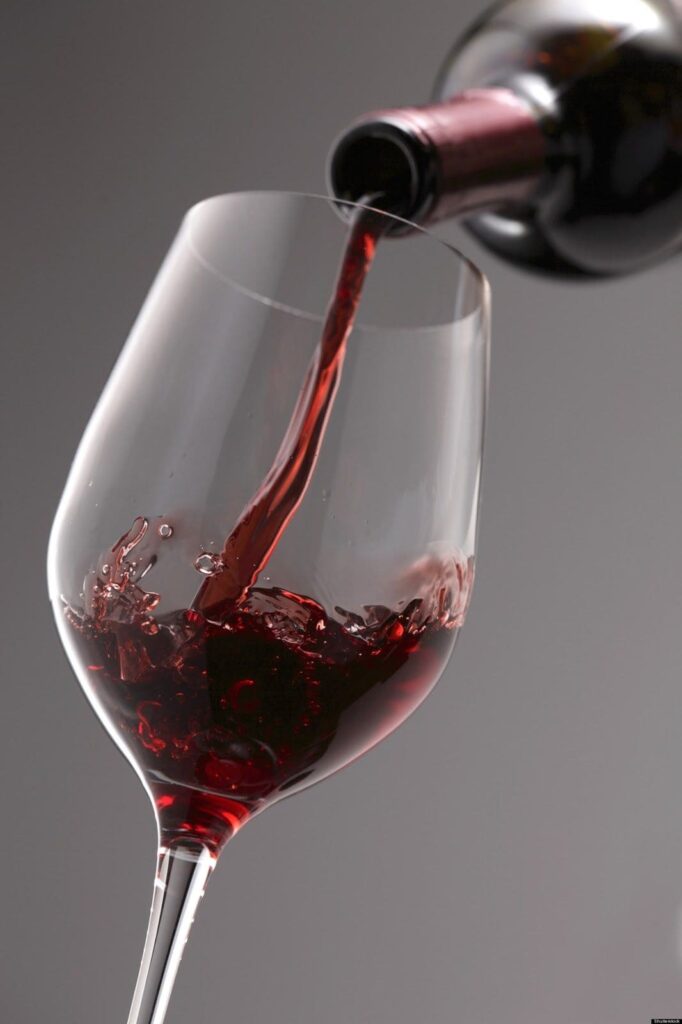
Tips for Reducing Caloric Intake
If you’re looking to reduce your caloric intake while enjoying red wine, here are some tips to consider:
- Choose Lower-Calorie Wine Options: Opt for lighter-bodied red wines with lower alcohol content, as they generally contain fewer calories. Wines like Pinot Noir or Beaujolais can be good choices.
- Watch Your Serving Size: Be mindful of your portion sizes. Stick to a standard serving size, which is typically around 5 ounces (148 ml) per glass. Avoid oversized glasses that can lead to consuming more calories.
- Dilute with Sparkling Water: If you enjoy a lighter and more refreshing drink, consider mixing red wine with sparkling water to reduce overall caloric intake while still enjoying the flavors.
- Pair with Healthy Foods: Instead of consuming red wine on its own, pair it with nutrient-rich and low-calorie foods like vegetables, lean proteins, or whole grains. This can help create a more balanced meal and reduce the overall impact on caloric intake.
- Consider Lower-Calorie Alternatives: Explore low-calorie or light red wine options available in the market. These wines are specifically crafted to have reduced caloric content while still maintaining the flavors and characteristics of traditional red wines.
- Be Mindful of Other Beverages: Remember that red wine isn’t the only source of calories in your diet. Be mindful of other high-calorie beverages and consider moderating your overall liquid calorie intake.
- Focus on Overall Dietary Balance: Reducing caloric intake isn’t solely about wine consumption. Maintain a well-balanced diet, incorporate regular physical activity, and consider consulting with a registered dietitian for personalized advice on managing your caloric intake.
How to Drink Red Wine Responsibly
Drinking red wine responsibly is essential for enjoying its benefits while minimizing any potential risks. Here are some guidelines for responsible red wine consumption:
- Moderate Intake: Follow the recommended guidelines for moderate alcohol consumption. This typically means up to one standard drink per day for women and up to two standard drinks per day for men. It’s important to note that these guidelines may vary depending on individual factors, so consult with a healthcare professional if you have specific concerns.
- Know Your Limits: Understand your personal tolerance and limits when it comes to alcohol. Pay attention to how red wine affects you and drink at a pace that allows you to remain in control and aware of your actions.
- Pace Yourself: Sip and savor your red wine slowly, allowing yourself to fully appreciate its flavors and aromas. Avoid rushing or consuming it too quickly.
- Hydration is Key: Drink water alongside your red wine to stay hydrated and help pace yourself. This can also help prevent dehydration and mitigate the potential effects of alcohol.
- Avoid Drinking and Driving: Never drink and drive. Make alternative transportation arrangements or designate a sober driver if you plan to consume red wine or any alcoholic beverage.
- Be Mindful of Medications: If you take medications, be aware of any potential interactions with alcohol. Some medications can have adverse effects when combined with red wine, so consult with your healthcare provider or pharmacist for guidance.
- Listen to Your Body: Pay attention to how you feel while consuming red wine. Stop drinking if you feel unwell, dizzy, or experience any negative effects. It’s important to prioritize your well-being and make responsible decisions.
- Plan Ahead: If you’re attending an event or social gathering where red wine will be served, plan ahead by arranging transportation or making other accommodations to ensure a responsible and safe experience.
Responsible red wine consumption means enjoying it in moderation, being aware of your limits, and making informed decisions that prioritize your health and well-being.
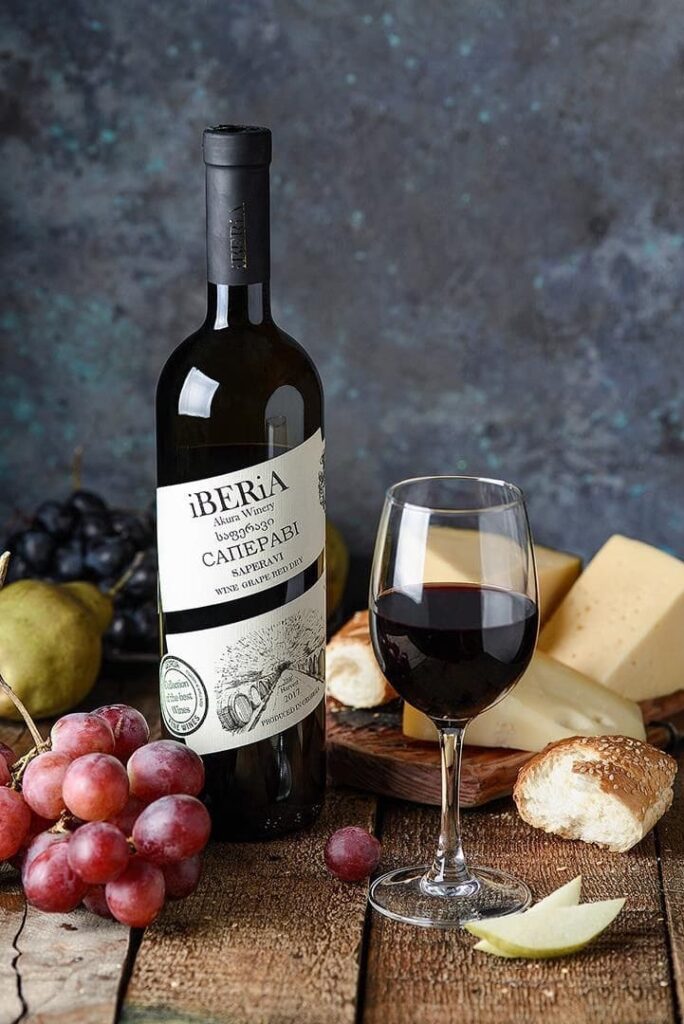
FAQs
Is it OK to drink a bottle of wine a day?
Drinking a bottle of wine a day is generally not considered moderate or responsible alcohol consumption. Excessive alcohol intake can have negative effects on health and increase the risk of various health conditions. It’s advisable to follow recommended guidelines for moderate alcohol consumption and consult with a healthcare professional for personalized advice.
Is red wine more fattening than vodka?
Red wine and vodka contain a similar number of calories per serving. However, the choice of mixer and portion size can significantly impact the overall calorie intake. It’s important to consider the total caloric content of your beverage and drink in moderation to manage caloric intake effectively.
Will I lose weight if I stop drinking a bottle of wine a night?
Weight loss is influenced by various factors, including overall diet, physical activity, and lifestyle choices. Reducing or eliminating a bottle of wine consumed nightly can contribute to a calorie deficit, which may aid in weight loss. However, individual results may vary, and it’s recommended to adopt a comprehensive approach to weight management, including a balanced diet and regular exercise.
Is red wine less fattening than beer?
Red wine generally has a lower calorie content than regular beer. However, the specific calorie count can vary depending on the type and brand of red wine or beer. Light beers typically have fewer calories than red wine, while higher-alcohol or craft beers can be comparable or even higher in calorie content. Moderation and portion control are important factors in managing caloric intake.
Does red wine have less calories than liquor?
The calorie content of red wine and liquor can vary depending on the specific type and brand. Generally, liquor, such as vodka or whiskey, has a higher alcohol concentration and, therefore, more calories per ounce compared to red wine. However, the serving size and choice of mixers also impact the overall calorie intake. It’s important to be mindful of portion sizes and consume alcohol in moderation.
Are there any sugar-free red wines available?
Red wines naturally contain sugars from grapes. While some wines may have minimal residual sugar, it’s unlikely to find completely sugar-free red wines. However, there are red wines labeled as “dry” or “extra dry,” which typically have lower sugar content compared to sweeter red wine varieties.
Can red wine be part of a healthy diet?
Red wine can be enjoyed as part of a healthy and balanced diet when consumed in moderation. It’s important to consider the overall dietary context, individual health status, and consult with a healthcare professional for personalized advice.
Does red wine contain gluten?
Red wine is generally considered gluten-free. However, some individuals with gluten sensitivity or celiac disease may experience reactions due to cross-contamination or additives used during winemaking. It’s advisable to look for wines labeled as gluten-free or consult with the winery or producer for information regarding potential gluten exposure.
Can red wine be enjoyed by pregnant women?
Pregnant women are generally advised to avoid consuming alcohol, including red wine. Alcohol consumption during pregnancy can potentially harm the developing fetus and lead to various health issues. It’s recommended to follow the guidance of healthcare professionals and abstain from alcohol during pregnancy.
Is it safe to consume red wine while taking medications?
It’s important to consult with a healthcare professional or pharmacist regarding any potential interactions between red wine and medications you may be taking. Some medications can have adverse effects or interactions when combined with alcohol, including red wine. It’s advisable to follow the guidance provided by healthcare professionals and ensure safe consumption.
Conclusion
After indulging in a glass of red wine, many of us often wonder, how many calories in a bottle? Well, based on my personal experience and research, understanding the caloric content of red wine is crucial for those conscious of their dietary intake. While the specific number may vary depending on factors such as grape variety, sweetness levels, and alcohol content, it is generally estimated that a standard bottle of red wine contains around 600 to 900 calories. However, it’s important to remember that enjoying a bottle of red wine is not solely about counting calories. Red wine offers a delightful sensory experience, a moment of relaxation, and even potential health benefits in moderation. So, the next time you uncork a bottle, savor it with confidence, knowing that you’re not only appreciating the flavors and aromas but also adding a touch of indulgence to your life.
I’m Chen Mina, from Vol de Nuit, who has a special passion for bartending, especially mixing wine, beer, and cooktail. Here you will find content about alcoholic beverages, I will bring you knowledge that few people know about this drink.



